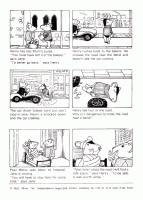The kitchen as an puppet animation studio
The Burglar was voted the most popular film at the Animator’s Association (ANIMA) Festival held in September. Film maker Tina Fletcher tells how she progressed from puppet shows to puppet films and the production of The Burglar. ‘The Burglar” was shot in our kitchen. Nothing very extraordinary about that, for in the amateur film making … Read more

